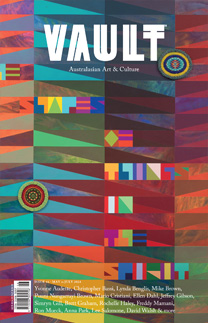Lindy Lee:
The
Original
and the
Copy
Lindy Lee’s practice is driven by questions of identity and the nature of the self. Her works foreground impermanence, flux, connection and interdependence, presenting a dynamic and liberating take on who we are and how we construct ourselves.
“Repetition, the photograph, the copy – all of those were methods to find a deeper connection,” says Lindy Lee, reflecting on the threads running through her diverse 35-year practice. In that time, she has worked with photocopies, photographs, ink, wax, bronze, paper, steel and fire. She has developed a vivid and symbolic language of colour and then moved towards somethings much more austere. “To me, it’s this continuous journey,” she says.
In a survey exhibition of Lee’s career scheduled for later in 2020, Sydney’s Museum of Contemporary Art (MCA) plans to present works that travel from her early photocopy pieces through to later series’ about family, Buddhism and the elements, as well as a large new commission, Moonlight Deity (2020). The in-depth survey has been curated by museum director Elizabeth Ann Macgregor, who has known Lee’s practice for decades. “I visited Lindy’s studio on my first trip to Australia in 1995 – before I ever considered working here – and have followed her career with close interest ever since,” she says. “I was struck then by the way she was thinking through what it means to be ‘between two cultures’.”
These early works of Lee’s are photocopies of photographs of paintings from the Western canon. Untitled (After Jan van Eyck) (1985) is a single image, compelling and hazy. Philosophy of the Parvenu (1990) is two lines of faces fading in and out. The context for these was a period spent abroad. Lee had just returned to Australia after several years travelling, including to Italy, as well as studying in London at the Chelsea School of Art. She had . .. Subscribe to read this article in full
























